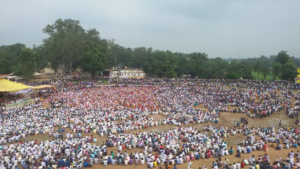

Analysing the Data on Industrial Disputes
The recent violence at the Wistron Corp’s factory near Bengaluru draws attention to the complex nature of labour unrest. Particularly in the aftermath of the COVID pandemic, existing labour conflicts have been accentuated, as businesses try to cope with the economic downturn. One of the issues that the Wistron incident highlights is the nature of the working conditions offered to the workers. The workers were made to work twelve-hour shifts and the break allotted in this gruelling workday is a meagre 90 minutes (cumulatively throughout the day). The Wistron incident is not surprising, considering the allegations involving non-payment of wages to the workers. The nature of the retaliation by the workers, brings to the fore the lack of faith in the formal industrial dispute resolution mechanism as it exists. While the violence will be scrutinised by the police independently, the allegations cast upon Wistron Corp may attract the provisions of the Industrial Disputes Act, 1947 (ID Act).
Section 2(k) of the ID Act deems that a dispute involving terms of employment or conditions of labour will be an industrial dispute. Thus, the ambit of industry and industrial dispute is a broad one and may even encompass an incident akin to what happened at Wistron Corp. The ID Act clearly specifies that it aims to investigate and settle disputes. It provides for many avenues to settle disputes. One such option is the Grievance Redressal Machinery, aiming to settle individual grievances. It also provides a tentative timeline for resolution of a grievance in a span of thirty days. This is not a mandatory timeframe and hence one way to reinstate belief in grievance redressal could be by enforcing a mandatory timeframe. Section 10 of the ID Act allows the ‘appropriate government’ to refer a dispute to the board or court or tribunal. The provision provides that referrals be made for disputes that exist or those that are apprehended. There is some inclination to ensure expeditious resolution and adjudication in the ID Act (Section 14 and 15 make references to the same), but there are no prescribed mandatory timelines for adjudication or resolution of disputes.
We analysed existing data on cases under the ID Act. An analysis of 4271 disposed cases and 1807 pending cases, was taken up from the DAKSH database. The data pertains to labour cases in the state of Karnataka. Relevant cases pertaining to labour and industrial disputes were identified based on the Acts to which the cases were tagged. The analysis showed the most number of civil cases were related to ID Act Section 10 (1)(d) (1838 cases). Section 10 of the ID Act deals with referencing of disputes to boards or courts or tribunals. Further, Section 10 (1)(d) of the ID Act states that reference can be made regarding disputes pertaining to wages, compensation, hours of work amongst other issues. In the Wistron Corp incident, the disputes may be referred to the industrial tribunal as per the third schedule of the ID Act.
Further, the analysis from the DAKSH database (Karnataka data) of the cases under the civil category tagged to labour and industrial disputes also allowed us to identify the average pendency and average disposal time. The average pendency (in days) for labour cases under the civil classification was 632 days and the average time taken for disposal (in days) for the same category was 940 days. Coupled with the fact that the ID Act does not mandate time frame for resolution and adjudication, the time taken to resolve such cases may deter employees from pursuing the matters before the formal dispute resolution forums.
Thus, disposal time for labour cases as highlighted from the data above, is hardly effective if one considers the nature of the disputes. Employees will not want to wait for almost three years for adjudication of the civil labour disputes. This may have an adverse effect on the employees who want to fight crucial issues, including disputes pertaining to conditions of work. Further, it is argued that research in certain states (Tamil Nadu, West Bengal and Maharashtra) reveal the failure of the conciliation mechanisms in place. Thus, there is an urgent need to provide robust timely redressal mechanisms for employees. This can be accomplished by streamlining the dispute resolution processes available to all parties, including prescribing mandatory time frames, wherever feasible.
The views expressed in this article are solely those of the author’s and they do not represent the views of DAKSH.

Sandhya PR
RECENT ARTICLES


POLITICAL MANIFESTOS AND JUDICIAL REFORMS

Challenges in NCLT Filing Procedures: Advocates’ Perspectives

Beyond Revenue – Reimagining Court Fee As A Policy Tool For Judicial Administration
The recent violence at the Wistron Corp’s factory near Bengaluru draws attention to the complex nature of labour unrest. Particularly in the aftermath of the COVID pandemic, existing labour conflicts have been accentuated, as businesses try to cope with the economic downturn. One of the issues that the Wistron incident highlights is the nature of the working conditions offered to the workers. The workers were made to work twelve-hour shifts and the break allotted in this gruelling workday is a meagre 90 minutes (cumulatively throughout the day). The Wistron incident is not surprising, considering the allegations involving non-payment of wages to the workers. The nature of the retaliation by the workers, brings to the fore the lack of faith in the formal industrial dispute resolution mechanism as it exists. While the violence will be scrutinised by the police independently, the allegations cast upon Wistron Corp may attract the provisions of the Industrial Disputes Act, 1947 (ID Act).
Section 2(k) of the ID Act deems that a dispute involving terms of employment or conditions of labour will be an industrial dispute. Thus, the ambit of industry and industrial dispute is a broad one and may even encompass an incident akin to what happened at Wistron Corp. The ID Act clearly specifies that it aims to investigate and settle disputes. It provides for many avenues to settle disputes. One such option is the Grievance Redressal Machinery, aiming to settle individual grievances. It also provides a tentative timeline for resolution of a grievance in a span of thirty days. This is not a mandatory timeframe and hence one way to reinstate belief in grievance redressal could be by enforcing a mandatory timeframe. Section 10 of the ID Act allows the ‘appropriate government’ to refer a dispute to the board or court or tribunal. The provision provides that referrals be made for disputes that exist or those that are apprehended. There is some inclination to ensure expeditious resolution and adjudication in the ID Act (Section 14 and 15 make references to the same), but there are no prescribed mandatory timelines for adjudication or resolution of disputes.
We analysed existing data on cases under the ID Act. An analysis of 4271 disposed cases and 1807 pending cases, was taken up from the DAKSH database. The data pertains to labour cases in the state of Karnataka. Relevant cases pertaining to labour and industrial disputes were identified based on the Acts to which the cases were tagged. The analysis showed the most number of civil cases were related to ID Act Section 10 (1)(d) (1838 cases). Section 10 of the ID Act deals with referencing of disputes to boards or courts or tribunals. Further, Section 10 (1)(d) of the ID Act states that reference can be made regarding disputes pertaining to wages, compensation, hours of work amongst other issues. In the Wistron Corp incident, the disputes may be referred to the industrial tribunal as per the third schedule of the ID Act.
Further, the analysis from the DAKSH database (Karnataka data) of the cases under the civil category tagged to labour and industrial disputes also allowed us to identify the average pendency and average disposal time. The average pendency (in days) for labour cases under the civil classification was 632 days and the average time taken for disposal (in days) for the same category was 940 days. Coupled with the fact that the ID Act does not mandate time frame for resolution and adjudication, the time taken to resolve such cases may deter employees from pursuing the matters before the formal dispute resolution forums.
Thus, disposal time for labour cases as highlighted from the data above, is hardly effective if one considers the nature of the disputes. Employees will not want to wait for almost three years for adjudication of the civil labour disputes. This may have an adverse effect on the employees who want to fight crucial issues, including disputes pertaining to conditions of work. Further, it is argued that research in certain states (Tamil Nadu, West Bengal and Maharashtra) reveal the failure of the conciliation mechanisms in place. Thus, there is an urgent need to provide robust timely redressal mechanisms for employees. This can be accomplished by streamlining the dispute resolution processes available to all parties, including prescribing mandatory time frames, wherever feasible.
[ReviewDisclaimer]

-
Rule of Law ProjectRule of Law Project
-
Access to Justice SurveyAccess to Justice Survey
-
BlogBlog
-
Contact UsContact Us
-
Statistics and ReportsStatistics and Reports
© 2021 DAKSH India. All rights reserved
Powered by Oy Media Solutions
Designed by GGWP Design